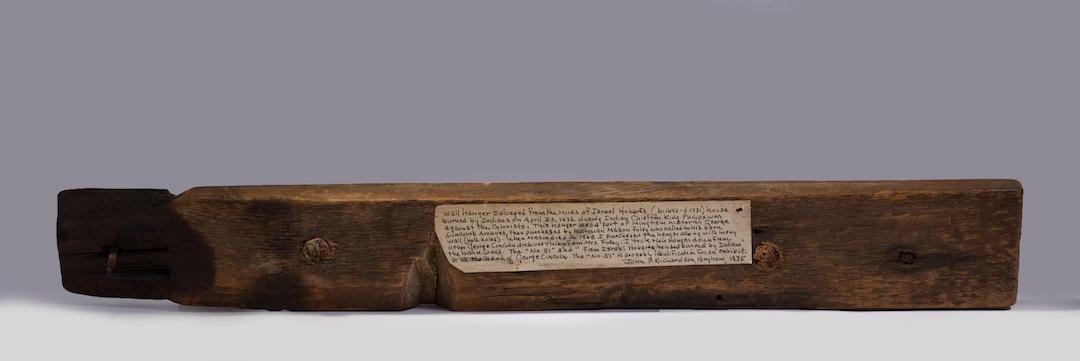The images here accompany my article “Materialities of Memory: Traces of Trauma and Resilience in Native and Colonial North America,” English Language Notes 57:2 (Oct. 2019): 7-21, in a special issue on “Memory, Amnesia, Commemoration” (eds. Ramesh Mallipeddi and Cristobal Silva). I am grateful to Derin Bray, Americana antiques dealer, for providing access to the images and permission to share them.
Hingham, Scituate, Weymouth, and nearby English towns are featured on this colonial map of the Northeast produced in the immediate aftermath of King Philip’s War. This map by John Foster accompanied a narrative of the war by English minister William Hubbard, and it focused on colonial sites of trauma and loss, constituting an important memory device about the war’s meaningful geographies for English colonists and their descendants. The map has been made available in digital high-resolution format by the John Carter Brown Library, which invites users to zoom in and engage with its details. Map courtesy of the John Carter Brown Library at Brown University, Providence RI USA.
My essay opens with a discussion of a poem by Kimberly Blaeser, an Anishinaabe writer, enrolled member of the Minnesota Chippewa Tribe, and Wisconsin Poet Laureate (2015-2016). Professor Blaeser authored “Estate of Chief Black Kettle (1813-1868),” a moving tribute to the prominent Southern Cheyenne leader who survived the Sand Creek Massacre and a meditation on the multiple meanings of objects in Indigenous and settler colonial contexts. This poem can be read, along with other work by Blaeser and multiple Indigenous writers, in Stories of Native Presence and Survivance in Commemoration of the 151st Anniversary of the Sand Creek Massacre, edited by Billy J. Stratton for Common-place.


